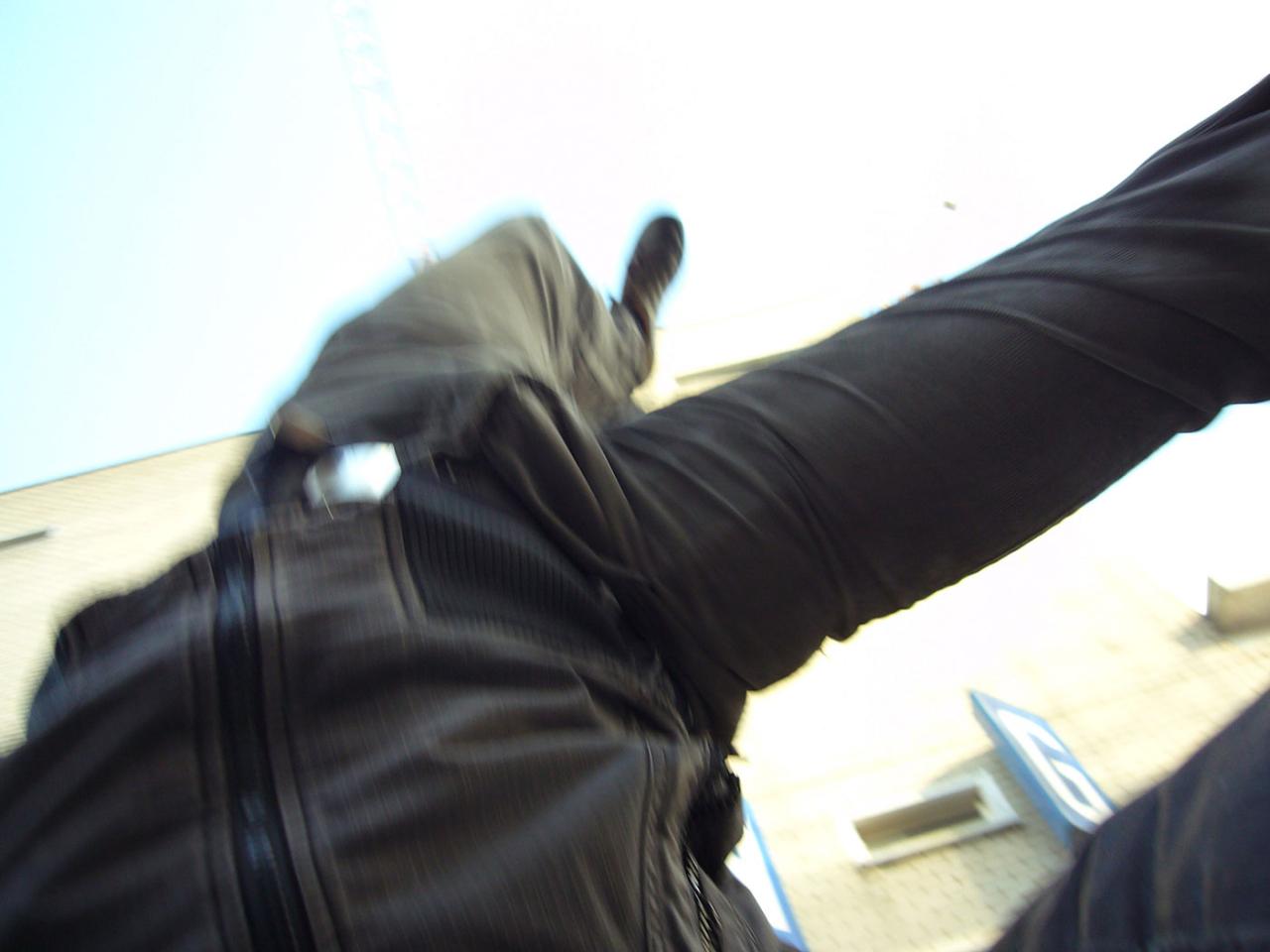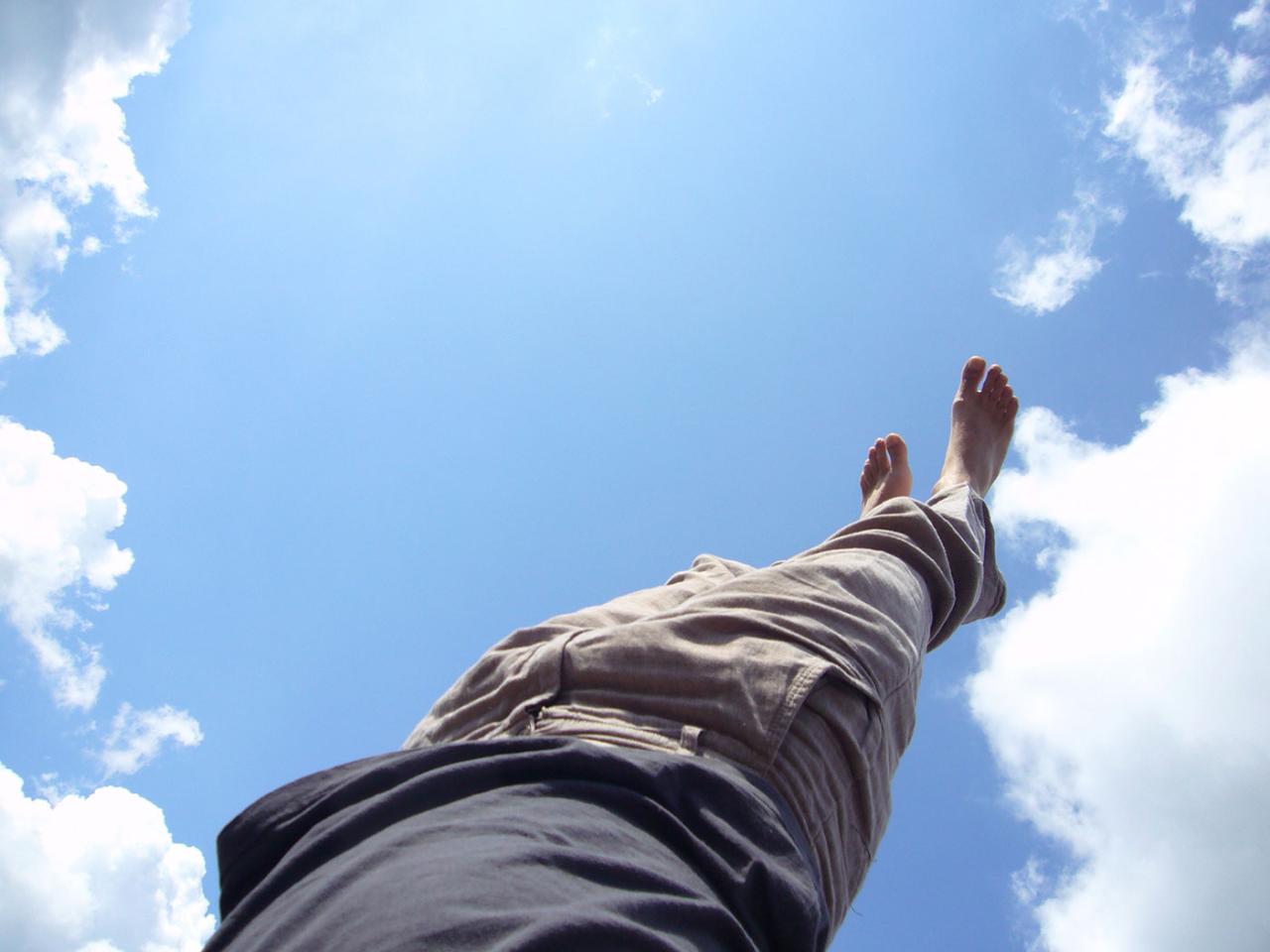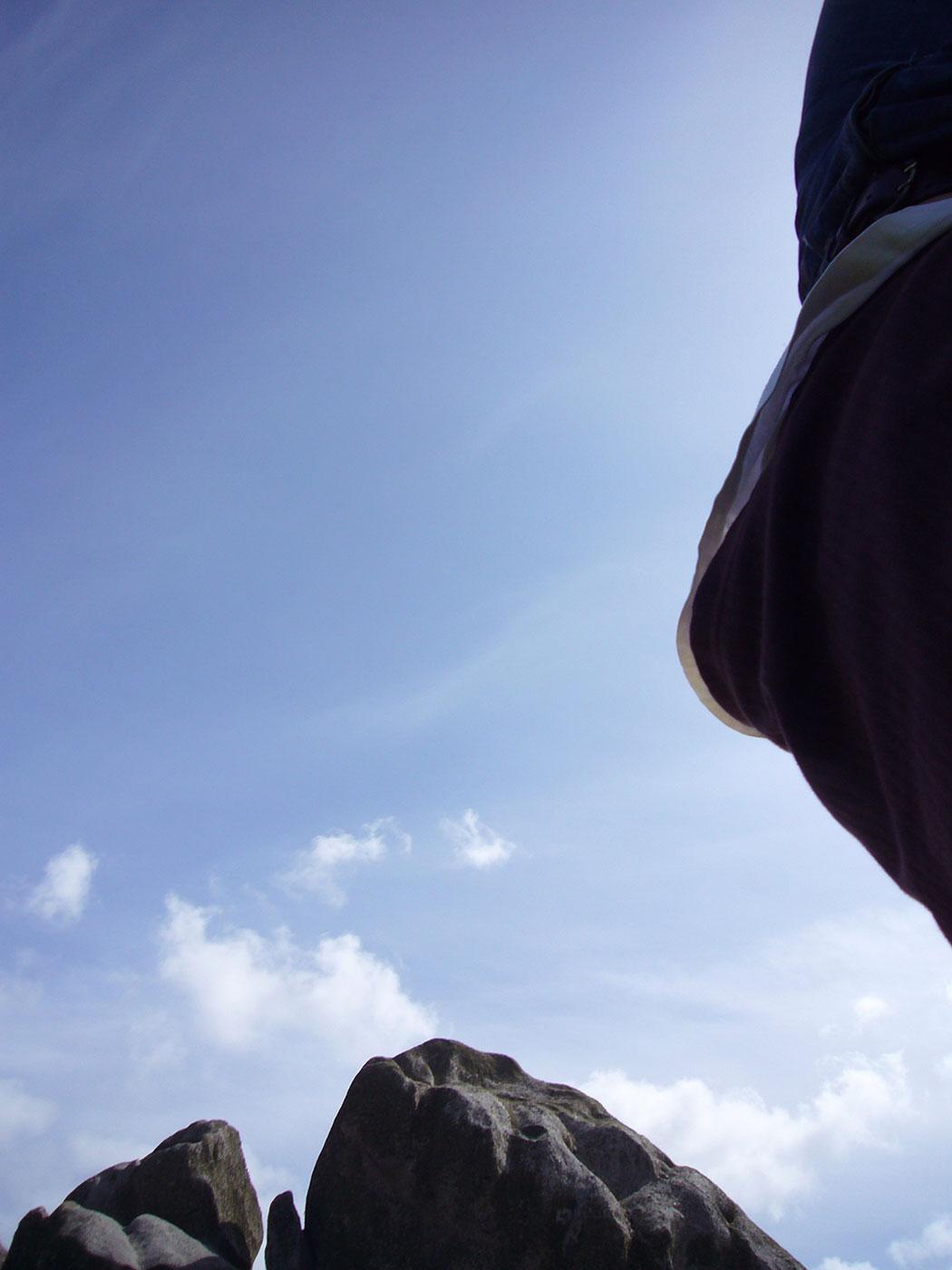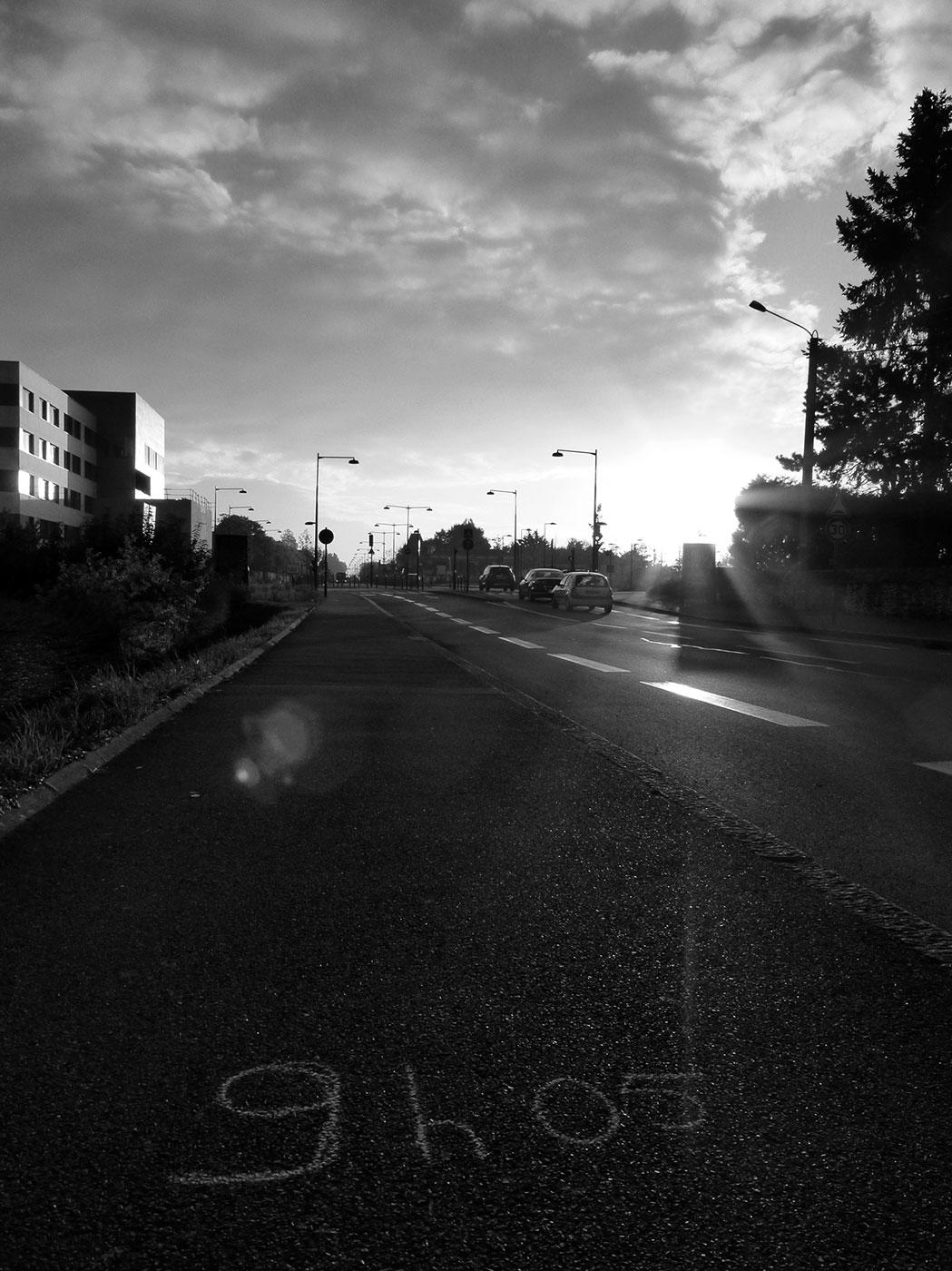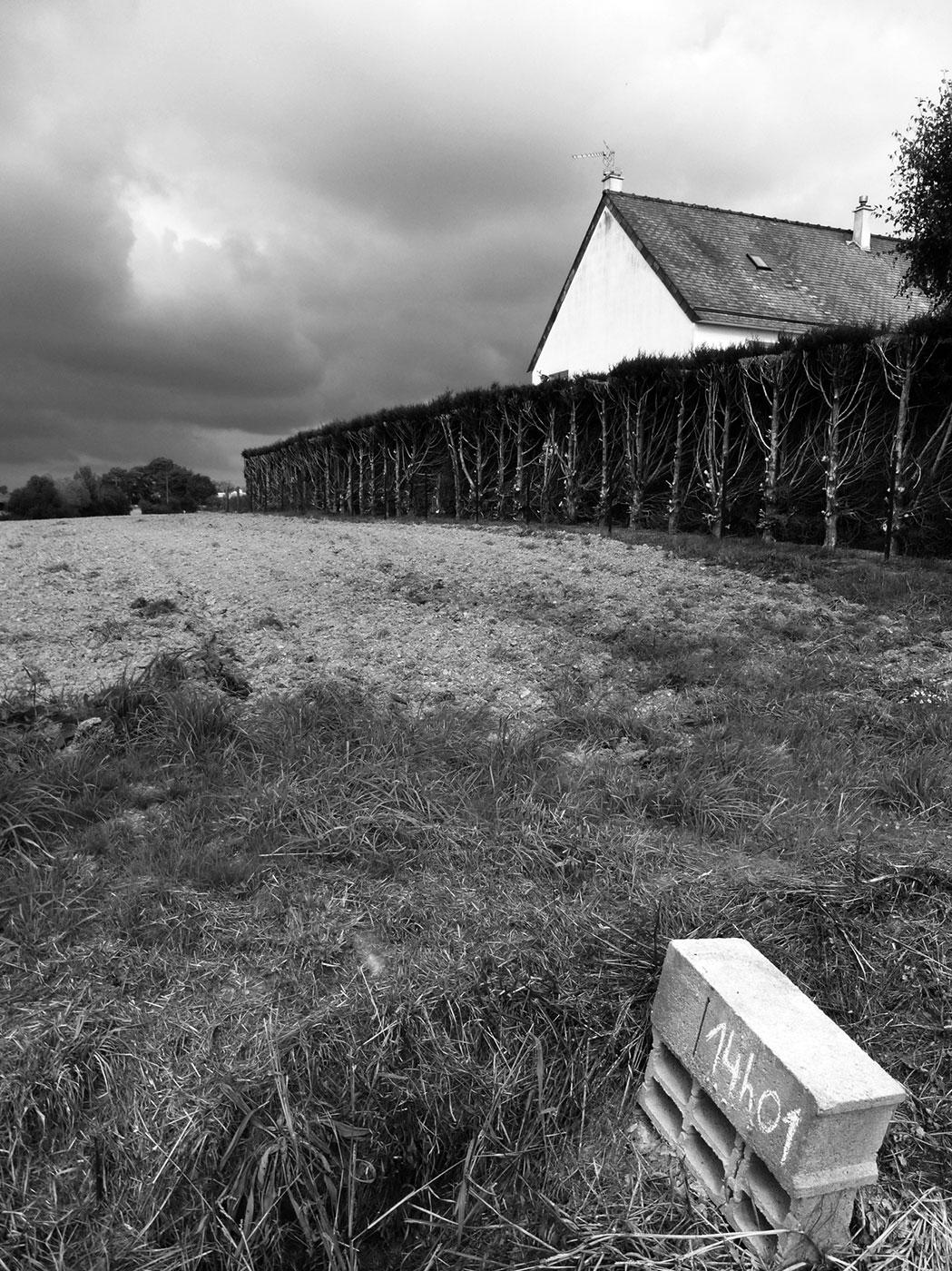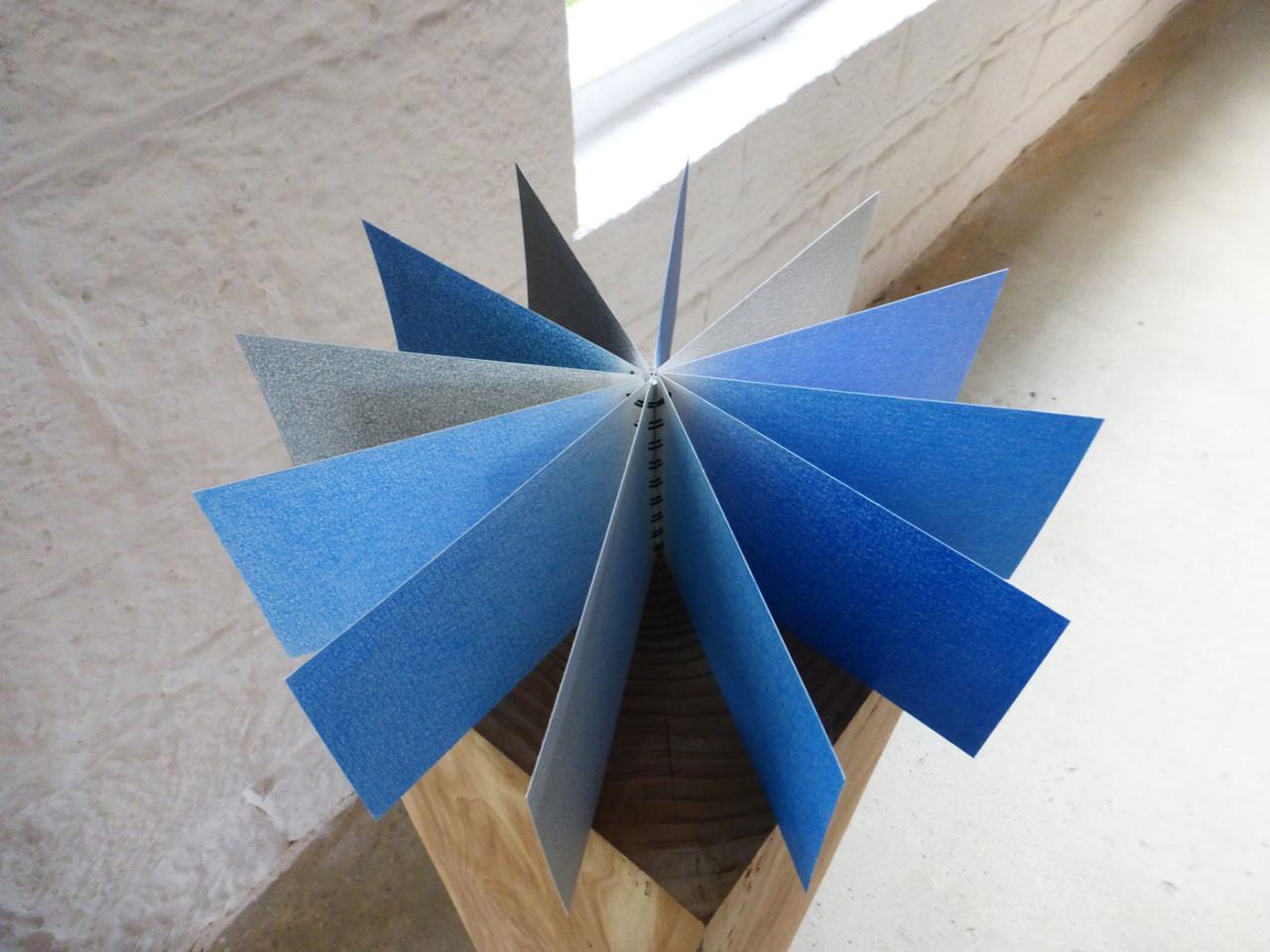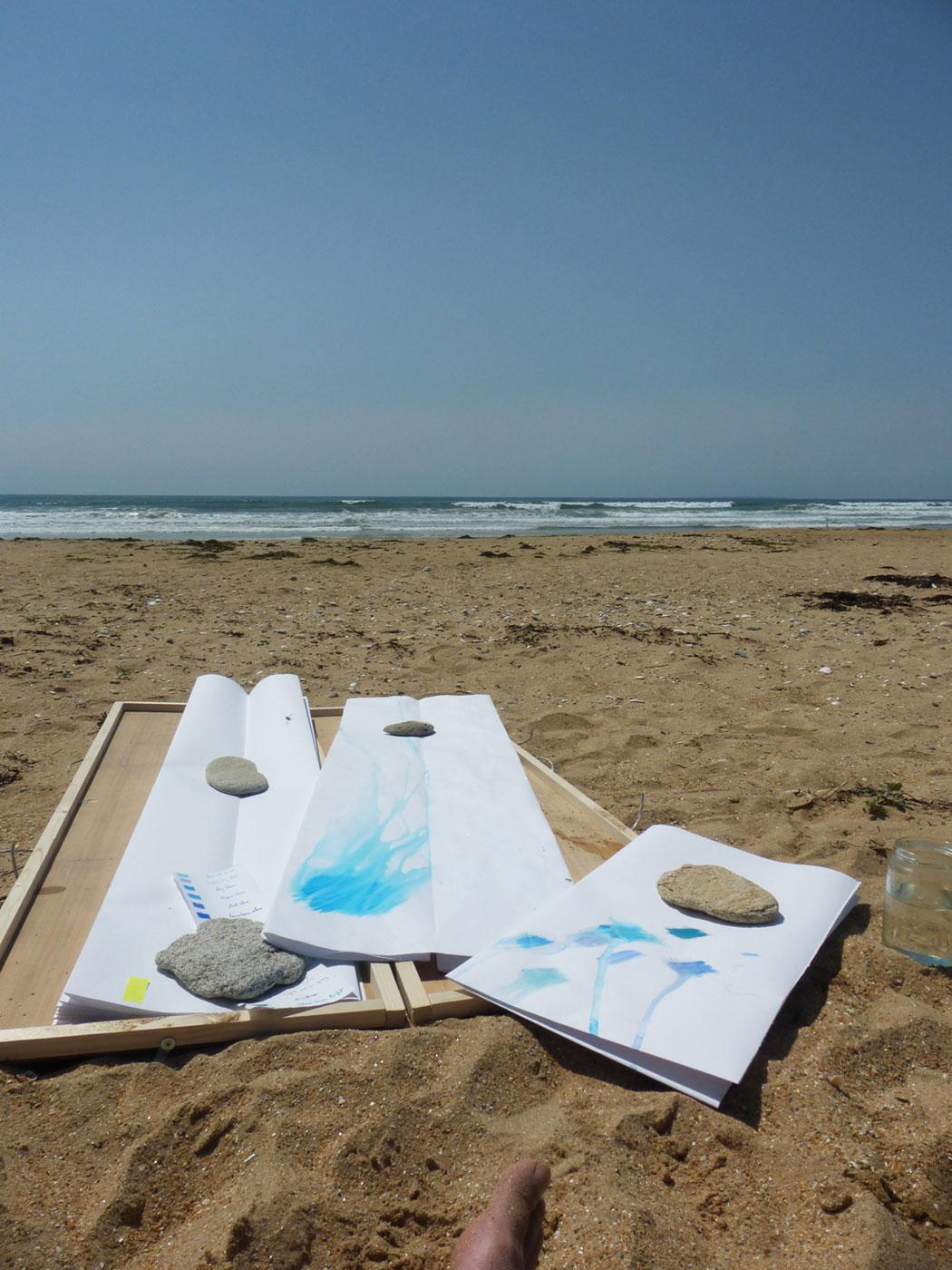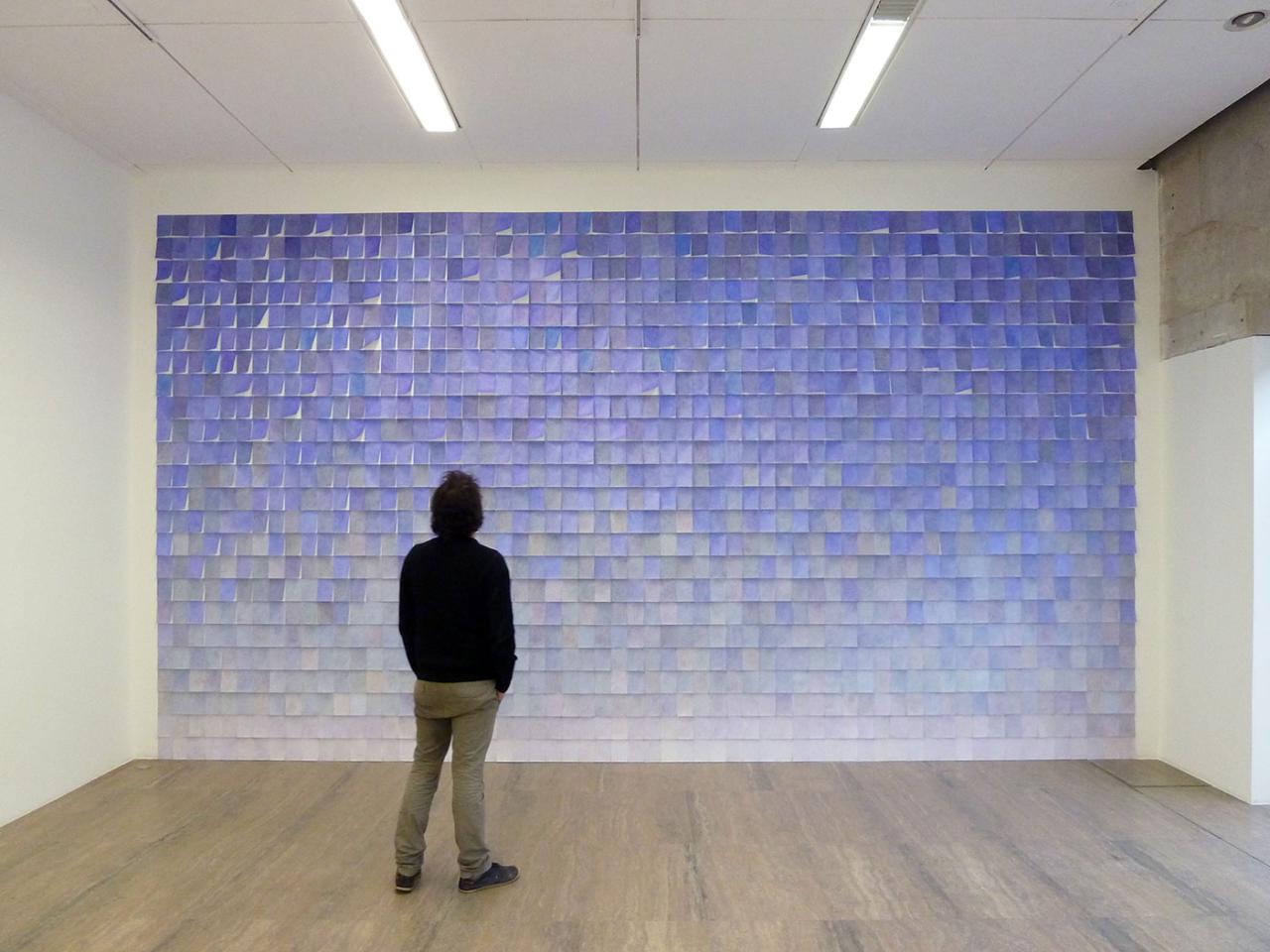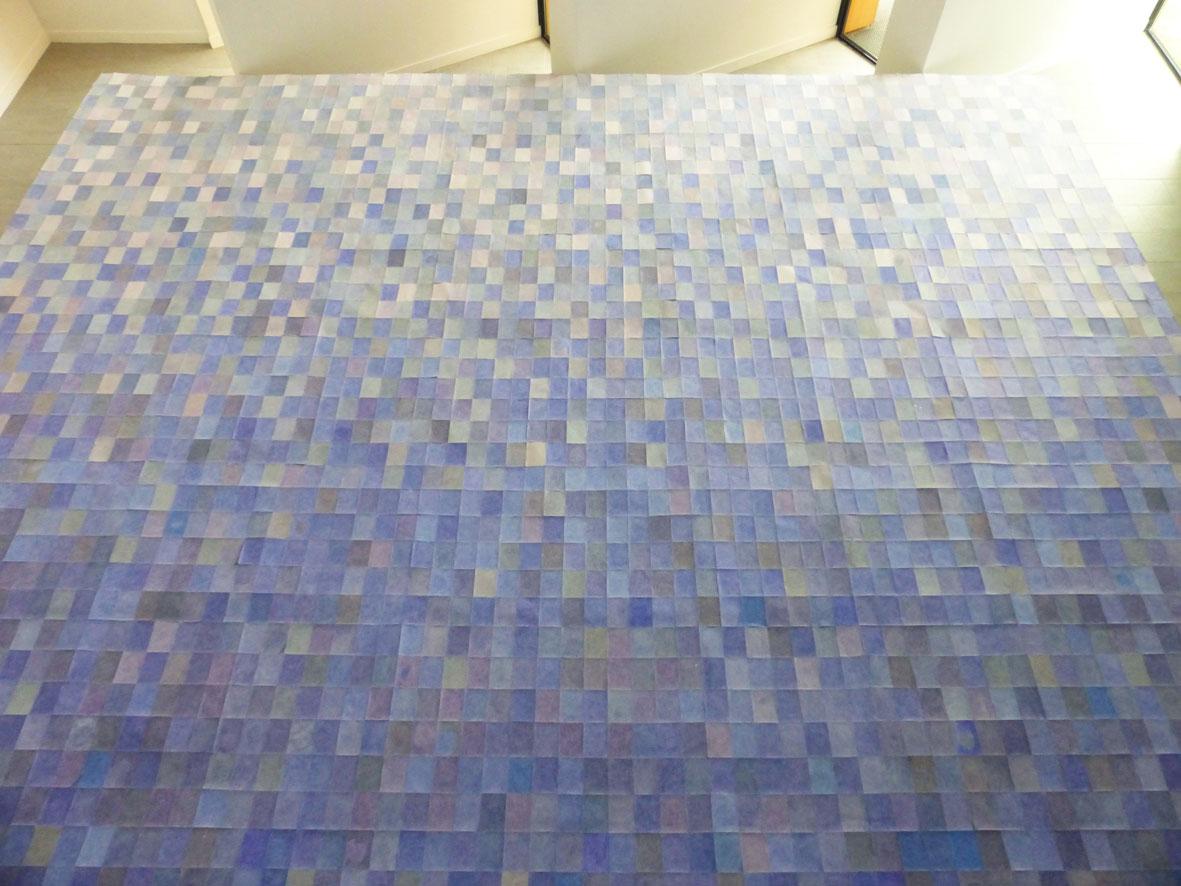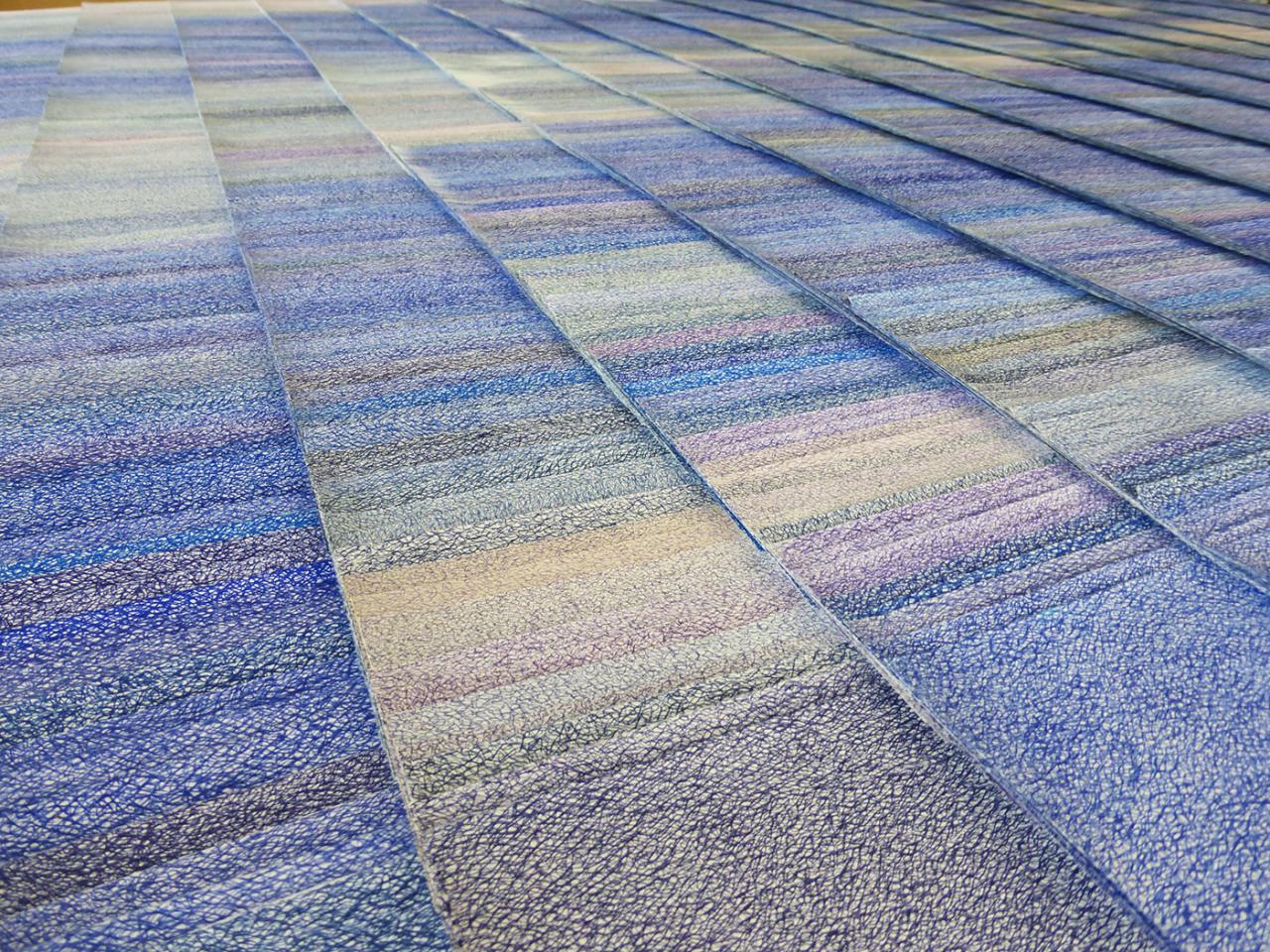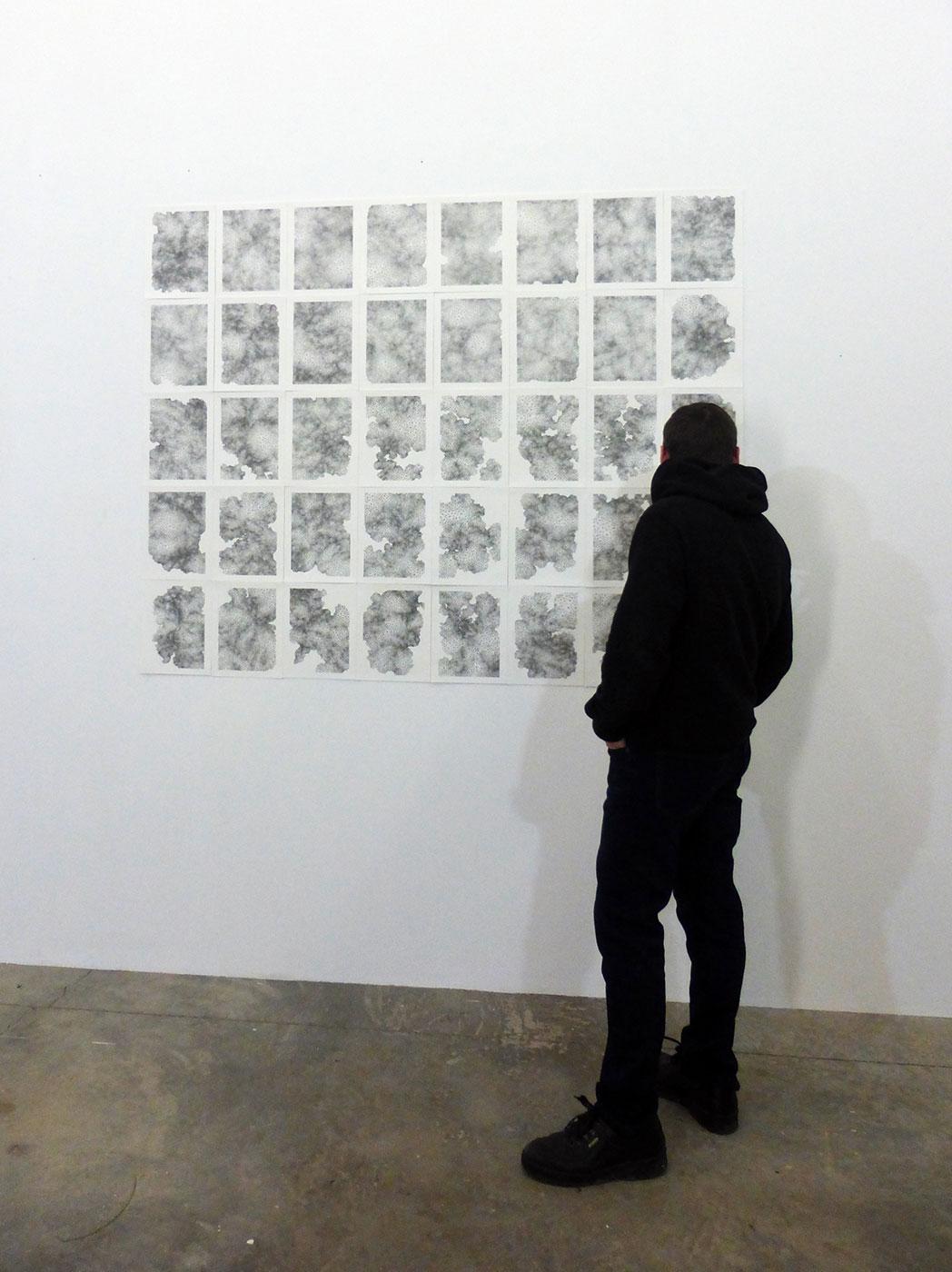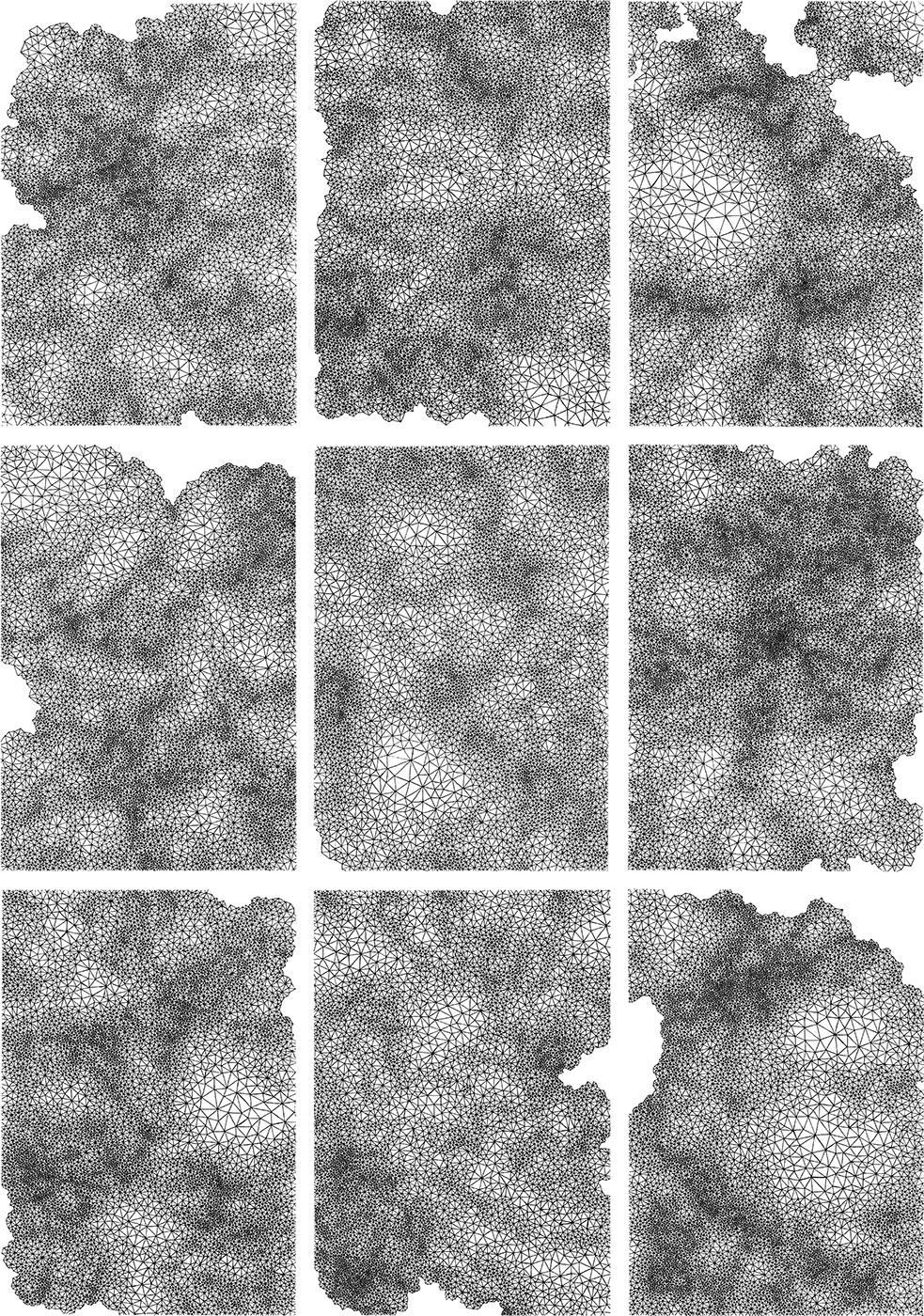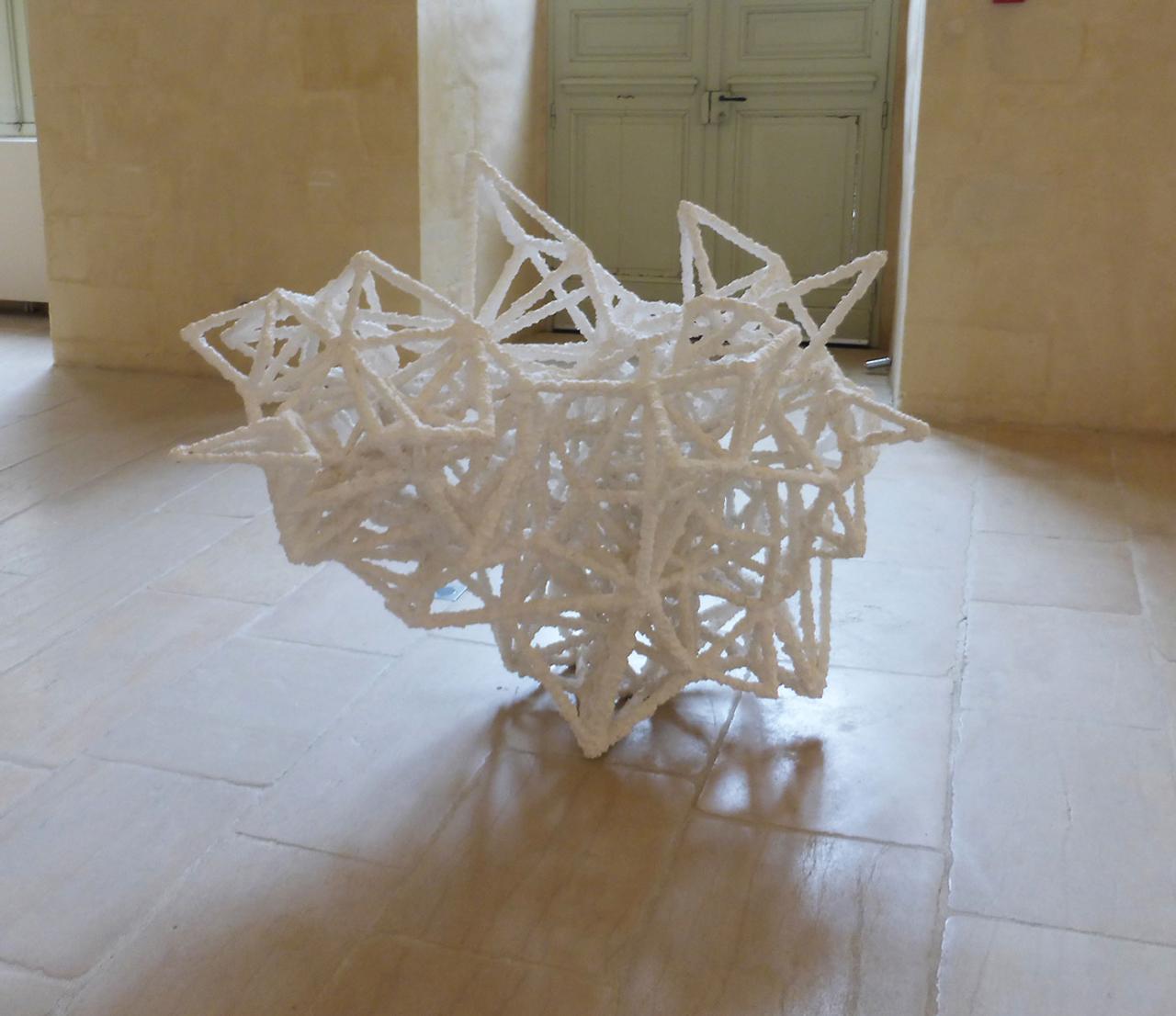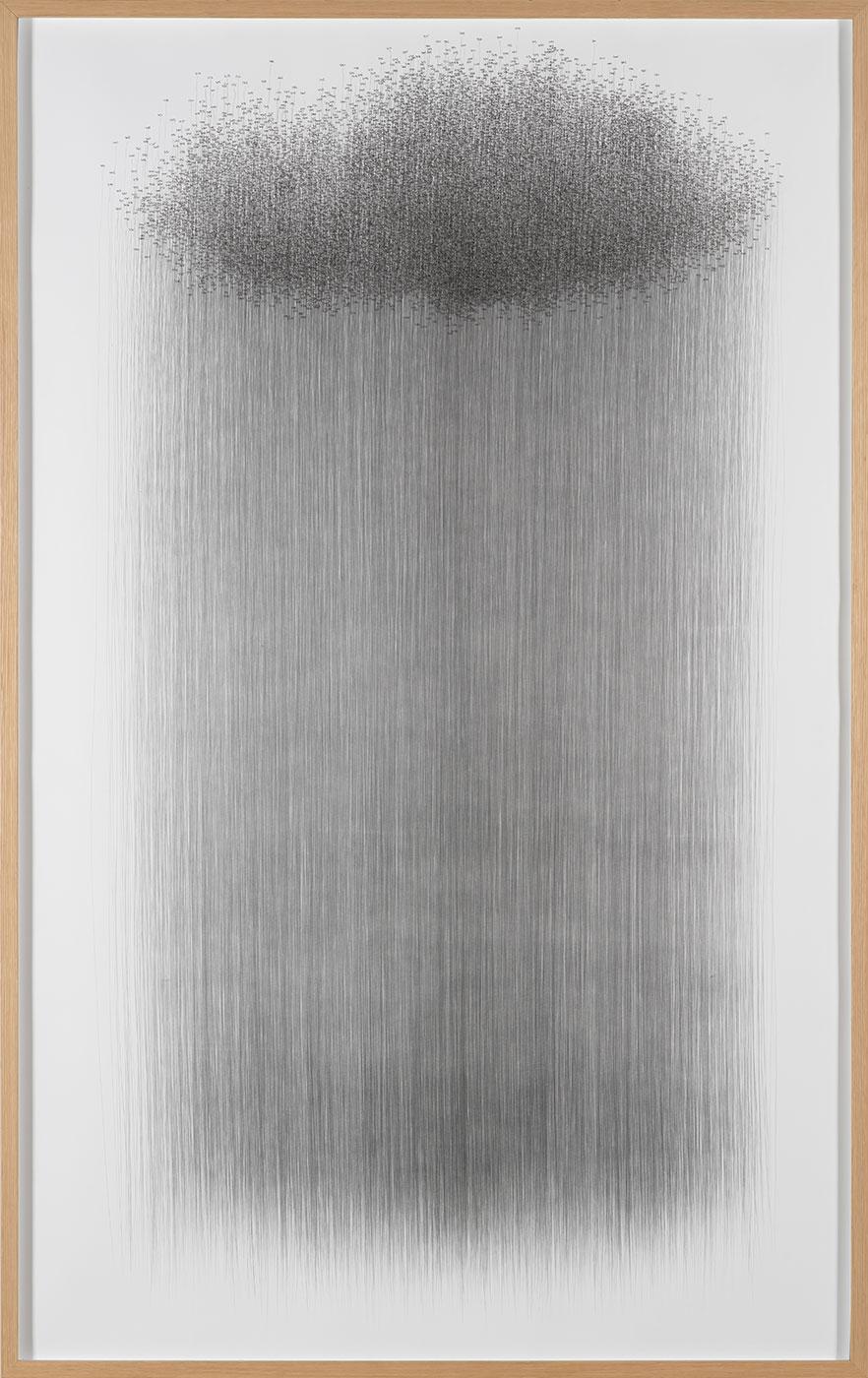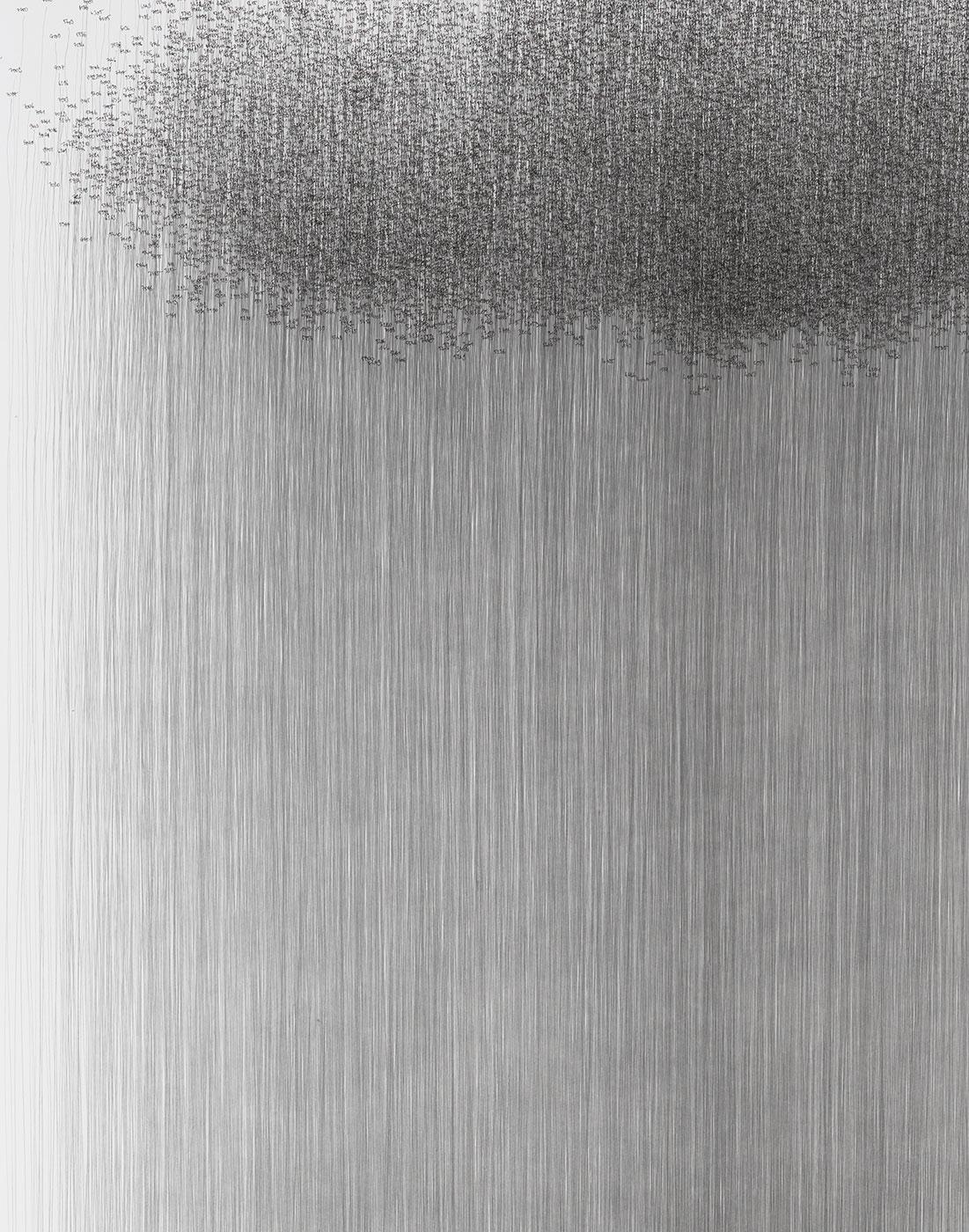Nikolas Fouré
Dreaming of transformation1
Born in 1976, in the Saint-Nazaire region, Nikolas Fouré studied fine arts in Lorient and then in Quimper. Trained in the early 2000s, he belongs to a generation that still admires the radical sobriety of Arte Povera, and is suspicious of the formalist creed of Minimalism—being only barely contaminated by the absurdity of clownlike figures produced by such artists as Bruce Nauman, Mike Kelley, Peter Fischli and David Weiss. The artist’s Breton origins—he lives in Rennes today, but is active here, there and everywhere—cannot be totally dismissed with the aim of sidestepping any form of geographical determinism. The oceanic climate, rocked by tides, in fact regularly exposes to cosmic mechanics an oeuvre that is aware of skies, clouds and light, natural phenomena, and the living world in a more overall way.
Trained first of all in the ways of sculpture and installation, then attracted by dance and performance, at an early age Nikolas Fouré undertook one or two actions putting his body to the test, during tragi-comic challenges involving becoming stunned and exhausted, and cavorting. He trained himself to climb up and down stairways while spinning on his own axis, getting close to the wildness of whirling Dervishes, and children doing stunts. “Spinning round and round” to achieve an ecstatic state of lost bearings, but also to assume an unmasked state of being at a loose end. He regularly stood on his head, accomplishing in various places a balancing act on just one hand, with his other hand photographing the blue of the sky, using approximate framing (Voyage sur les mains, 2011). In this way emerges the mythological figure of the Titan known as Atlas, given the task by Zeus to bear on his shoulders the globe of the celestial heavens, subsequently likened to the weight of knowledge.
As a mythical figure in a romantic form of conceptualism,2 Bas Jan Ader excels in the art of falling, before disappearing in 1975 in the Atlantic Ocean, during a solo and nothing if not foolhardy crossing. In the guise of a preamble to that tragic death, the Dutch artist had first criss-crossed Los Angeles by night, equipped with a flashlight, to reach the Pacific Ocean (In Search of the Miraculous). In October 2015, Nikolas Fouré shifted his own initiatory quest to Brittany, walking for 24 hours in a row, from dusk to dawn, from Rennes to Laval (Jet Lag 42). On the ground he recorded the times of different stages, made up of energy and exhaustion, and photographed them.3 Heading east, the walker’s aim was to gain a few extra seconds of daylight at the next sunrise: a way of getting ahead of time, while at the same time watching his own strength wane. A way, too, of confronting the human scale, incorporated in walking and in the Circadian cycle, on the cosmic scale of the earth’s rotation, as well as in the convention of the famous jet lag created by air travel.
In the 1960s, comparing map and territory became the artistic fad of several movements, ranging from Conceptual Art to Land Art, by way of more socially engaged forms such as Situationism. Some artists revered and criticized the authority of cartographic conventions, while observing the sovereignty of a nature deaf to any arbitrary constituency. Dennis Oppenheim’s iconic work, Annual Rings (1968) thus transposed onto snow-covered ground the growth rings of a tree, on either side of a river marking a change of time zone between the United States and Canada. Water flows, the tree grows, and the clock short-circuits these perpetual time-frames, straddling one hour of time in a giant’s stride.
In this paradoxical overlay of two space-time zones—one conventional, the other natural—there re-emerges the romantic criticism of capitalism: against the spirit of calculation and measurement which underpins digital individualism, against private property, the quantification of resources, their exaction, their extraction, and their commercialization. In terms of cartography, this is translated by the normalization of the world; through the appearance of straight lines in the guise of boundaries between states, denying the geographical dovetailing of territories, in favour of the appropriation of colonies and capital. “For industrial civilization, the qualities of nature do not exist: it only takes into account the quantities of raw materials which it can extract from it”.4
All the techniques—and technologies—developed to measure the incommensurable fascinate Nikolas Fouré, who regards these attempts as forms of modern conceit, at once absurd and poetic. The cyanometer, invented by Horace Bénédict de Saussure in the late 18th century, makes it possible, for example, to place the blue of the sky in a scale of 53 shades observed by the Swiss naturalist. The object assumes the form of a round colour chart, a sort of halo that must be held at arm’s length, in the direction of the sky. For a long time the blue of the sky remained a mystery that has intrigued many minds.5 Discovered by the artist several years ago, Saussure’s sight inspired many a thought in him, especially about incommensurability and perception.
In the 24 pages of a spiral notebook, Nikolas Fouré reproduces the colour taken on by the sky at each one of the 24 hours observed at the summer solstice, on a Morbihan beach. The object, presented completely deployed like a roundabout, makes it possible to grasp the 24 shades observed by the artist’s eye, running counter to Saussure’s systematic process (Solstice, 2018).
Every morning, over a ten-year period, from 2006 to 2016, the artist covered an A6 sheet of paper with a dense and even lattice, scribbled with a blue ballpoint pen. This daily routine, carried out with the simplest of office equipment—blue ball-point pens and 80g printer paper—gave rise to a stock of 3,000 drawings to be pinned to the wall or arranged flat, depending on variable partitions. There then appeared the vibrant frescoes of Ciel fond bleu, in which shades ranging from indigo to azure vibrate. Industry has not completely managed to set down a standardized blue, with chemistry, wear and tear and time all causing certain inks soften or coagulate. These odd monochromes thus form chequerboards on which, in the manner of large pixelized areas, the artist puts back together sunny dawn periods and solar incandescences.
Made like a morning meditation with a cosmic pretext, this scribbled filler reconciles various graphic legacies: between the loose hand of the automatic drawing of the Surrealists and the hard-line logic of Minimalist procedures, what is autobiographical about them is the imperious desire to be absent. But rather than abandoning itself to the rigour of the right-angled grid which accommodated so many forms of mania in the 1960s and 1970s, Nikolas Fouré’s mind roams about inside the traceries of entangled 8s, weaving nests with endless loops. These scribblings are often “asides”: the spontaneous expression of boredom, expectation or distraction. During his student days, Nikolas Fouré was a pion or ‘supervisor’, which enabled him to experience the paradoxical state of monitoring and absence, which was every bit as formative for artists who had been museum watchmen, before him.6
In 2018, the artist embarked on a series of drawings titled Mesurer les nuages/Measuring Clouds, crystallizing, in the cartographic method of triangulation, those nothing if not unstable meteors. The artist bartered his traceries of Ciel fond bleu for small contiguous triangles, in whose modulations appeared the volumes of clouds. Developed in the 16th century in the Netherlands, triangulation is “the complex of geodesic operations consisting in dividing a plot into triangles, the resolution of which is subsequently made from a directly measured side, using trigonometric levelling”.7 Before a triangulation system by satellite became widespread in the 1980s, with the appearance of Global Positioning System (GPS) geo-location, triangulation thus presupposed a physical coverage, which it is therefore impossible to undertake as far as clouds are concerned.
From a scientific viewpoint, setting down a normalized body of knowledge about clouds—those accumulations of “ceaselessly evolving particles”—took time and, as is often the case, military and space conquests sped things up, by permitting aerial observation. Various classifications emerged in the early 19th century. The first Atlas international des nuages appeared in 1896, illustrated with colour photographs. After being updated many times over, a scientific classification in 10 genuses, 14 species and 9 varieties was drawn up in 1956. Space meteorology started to develop in the 1960s, producing its first satellite photos.
In the history of representations, the cloud is the very motif of fleetingness. From the time when people still believed in celestial or heavenly kingdoms and realms, it was the instrument of revelation and apotheoses.8 It was used parsimoniously and with precision. Then 19th century English painting exhaled so much mist and fog that John Ruskin christened that new pictorial industry, where Turner was the hero, the “cloud department”.9 In those cloud-painters, critics saw the symptoms of a modernity in love with ‘cloudiness’: the profane adoration of the “nebulous”, the shady, the ephemeral, the imprecise and the immaterial; but also a fascination with fickleness and flimsiness. Far from being insignificant, these hazy vapours (akin to the Impressionism in the offing) would veil vision, and hide reality, leading to lacunae favourable for abstraction.
In the 1920s, Alfred Stieglitz photographed several hundred clouds, which he called Equivalents. Annoyed by criticism attributing the hypnotic quality of those photos to the photogenic nature of his models, he wanted to demonstrate that the power of his images did not have to do with their subject: clouds, he maintained, were sufficiently neutral and universal to belong to everyone.10 Much later on, in the 1980s, the threesome behind Information Fiction Publicité11 displayed them, in colour, on light boxes. The secularization of clouds came full circle with those intensely generic images, emblems of a media vacuousness and ambivalence disguised beneath naturalist attributes. They can be used willy-nilly for advertising an airline, an undertaker, or a credit card.
In the 1970s, clouds, vapours and draughts were also a way of depicting—at times ironically—the de-materialization of art. To wit, the migration of plastic forms towards their declarations, towards information and data. Nikolas Fouré’s triangulated daydreaming updates this fantasy of de-materialization currently incarnated by the Cloud. The fact is that giving the name of “Cloud” to our data load on an online network (the Internet) is tantamount to suggesting a fake de-materialization: claiming that server farms are every bit as immaterial, fluid and natural as clouds.12 Mesurer les nuages explores this murky contamination, which manages to naturalize digital structures and digitize natural forms.
The work also shows the state of distraction, typical of our day and age, from the Latin distraere, meaning literally “to pull in all directions”: this particular system of attention, peculiar to the digital age, is a new way of “being in the clouds”, letting oneself be pulled in all directions, at the mercy of alerts, notifications and surfings. In a 2014 film dealing with this issue of floating attention, tugged between the pseudo-dematerialization of the Cloud and the concretization of climate change (the two being linked), the German artist Hito Steyerl presented fake weather forecasts, mapping versatile flows of capital, data and moods. Faced with an ever more flagrant instability, the masked female programme presenter grew impatient, and said: “A light wind would get up, if, in the end of the day, you managed to concentrate”.
Translated by Simon Pleasance & Fronza Woods
Notes:
1-« Le nuage nous aide à rêver la transformation », Gaston Bachelard, L’air et les songes. Essai sur l’imagination du mouvement (1943), Paris: José Corti, 1990, p. 214.
2-The idea of a “romantic conceptualism” appeared in 1977 in an article which Boris Groys wrote about Moscow-based artists steeped in Russian idealism. Re-examined in the 2000s by Jörg Heiser and Jan Verwoert, the critical hypothesis was then broadened to the international conceptual scene, where there were still certain features of early German romanticism, such as collective writing, the fragmentary form, and the Witz spirit. The author of this essay dedicated her PhD to this subject: “La subsistance subjective. Problématiques romantiques dans l’art conceptuel” (2016, Université Paris-Sorbonne).
3-These images go to make the fanzine Jet Lag 42, Rennes, Lendroit, 2015, 24 p.
4-Michael Löwy, Robert Sayre, Révolte et mélancolie, Le Romantisme à contre-courant de la modernité, Paris: Payot, coll. ‘Critique de la politique’, 1992, p. 64.
5-Vinci, Goethe, Newton… cf. Peter Pesic, D’où vient le bleu du ciel ? La réponse des sciences à la question des arts, trans. Alain Laverne, Paris: Vuibert, 2009.
6-The American artists Sol LeWitt, Dan Flavin, Robert Ryman and Robert Mangold, as well as the art critic Lucy R. Lippard, were all at some time watchmen in New York’s Museum of Modern Art.
7-Jean-Loup Rivière, in Cartes et figures de la terre, exh. cat. [Centre Georges Pompidou, Paris, 24 May-17 November 1980], general curator Giulio Macchi, Paris: Centre Georges Pompidou, Centre de Création industrielle, 1980, p. 478.
8-Jean Chevalier, Alain Gheerbrant, Dictionnaire des symboles. Mythes, rêves, coutumes, gestes, formes, figures, couleurs, nombres, Paris: Robert Laffont / Jupiter [1969], 2000, p. 679.
9-John Ruskin, Modern painters, vol. III, New York: John Wiley, 1863, p. 255.
10-“I wanted to photograph clouds to find out what I had learned in 40 years about photography. Through clouds to put down my philosophy of life—to show that my photographs were not due to subject matter—not to special trees, or faces, or interiors, to special privileges—clouds were there for everyone—no tax as yet on them—free”. Alfred Stieglitz, The Amateur Photographer & Photography, 1923, vol. 56, n°. 1819, p. 255.
11-Jean-François Brun, Dominique Pasqualini and Philippe Thomas.
12-Gustavo Gomez Mejia, ‘De quoi le ‘nuage’ est-il le nom ? Le statut des supports face aux régimes du cloud computing’, Communication & languages, 2014/4 (no. 182), pp. 77-93, DOI : 10.4074/SO336150014014069.
